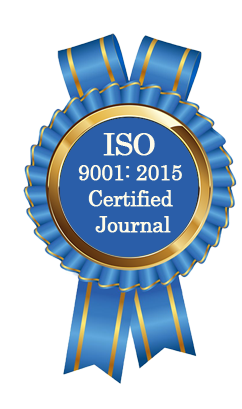| All | Since 2020 | |
| Citation | 105 | 60 |
| h-index | 4 | 4 |
| i10-index | 3 | 2 |
WJAHR Citation 
Login
News & Updation
Best Article Awards
World Journal of Advance Healthcare Research (WJAHR) is giving Best Article Award in every Issue for Best Article and Issue Certificate of Appreciation to the Authors to promote research activity of scholar.
Best Article of current issue
Download Article : Click here
Indexing
Abstract
ROLE OF COMPUTERIZED TOMOGRAPHY (CT) MODALITY IN EVALUATING HEAD INJURY
Saad Abdulrazzak Hamdan*, Zeena Abdulkader Tapou, Nehad kasim and Muataz Alani
ABSTRACT
Objective: This study is done to evaluate the CT findings in patients attended to the emergency department with head injury and to find out the common findings. Setting: It is carried out in alkhansaa teaching hospital - Mosul from Feb.2017 to April 2020. Participants: It is a prospective study of 400 patients whose ages range from 4 months -72 years. Subjective: Four hundrand patients were admitted to Emergency department, presented with head injury and examined by CT scanner within one week from the onset of trauma to evaluate the common CT findings in them. Method: Spiral CT used was Siemens somatom plus 4, using bone and brain window, sedation used for children under 6 years, no contrast was used. Result: The peak frequency of head injury was in the age range between 0-10 years of 150 patients (37.5%) and less frequent in older age groups . 233 were males (73.25%) and 167 were females (26.75%), M:F ratio was 2.8:1.Fall from height was the commonest cause of head injury64 patients (32.25%),Road traffic accidents 32 patients(14.7%), Bullet injury 35 patients (8.7%) shell injury 24 patients (6.2%), assault patients 4(2.5%). Normal CT was seen in 172 patients (43%) and abnormal CT findings were seen in 228 patients (57%), the most common abnormal CT findings were skull fracture 167 patients (41.7%),cerebral edema{pure 12 patients patients(3%), associated with other CT findings 63 patients (15.6%) total75}, contusion 66 patients (16.5%), sub arachnoid hematoma 40 patients(10%), it is important to mention that one patient may harboring more than one feature. The most common type of skull fracture was linear 107 patients (64%). Skull fracture was most commonly seen in association with cerebral edema 42 patients, then contusion 41 patients, sub arachnoid hemrrhage 32 patients, sub dural hematoma11patients . Conclusion: Skull fracture remains the commonest CT finding and cerebral edema is the most common intracranial findings because young children suffer greater damage from deffuse injury than older age groups while epidural hematoma is the least common intracranial hematoma. So CT remains the best modality of evaluating patients with head injury because it can show skull fracture with or without intracranial damage and every patient with history of head injury should have CT examination.
[Full Text Article] [Download Certificate]
